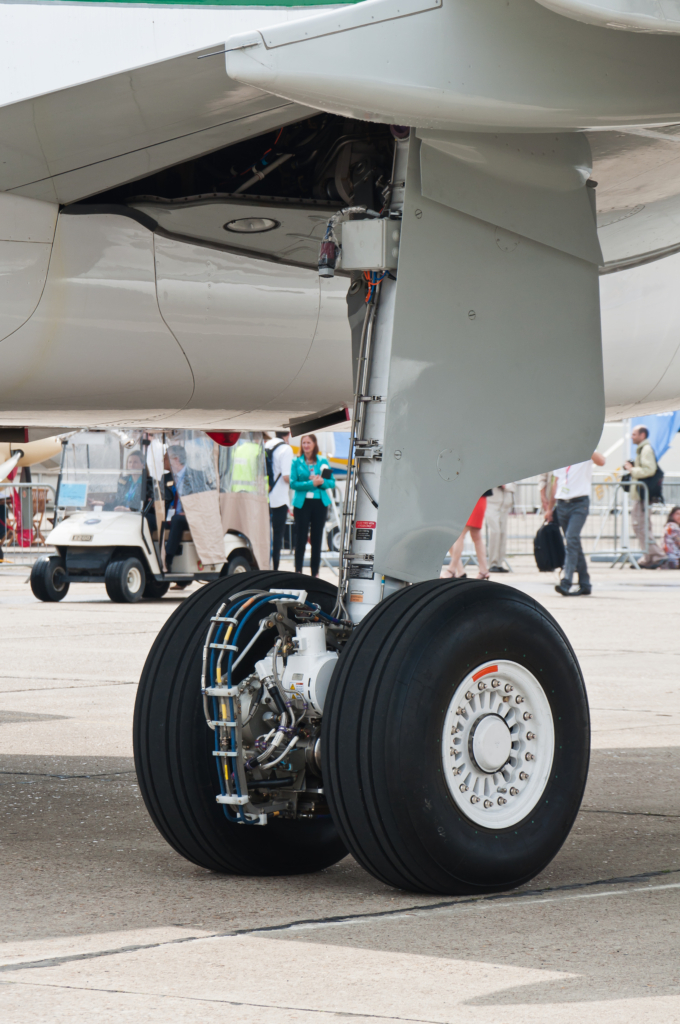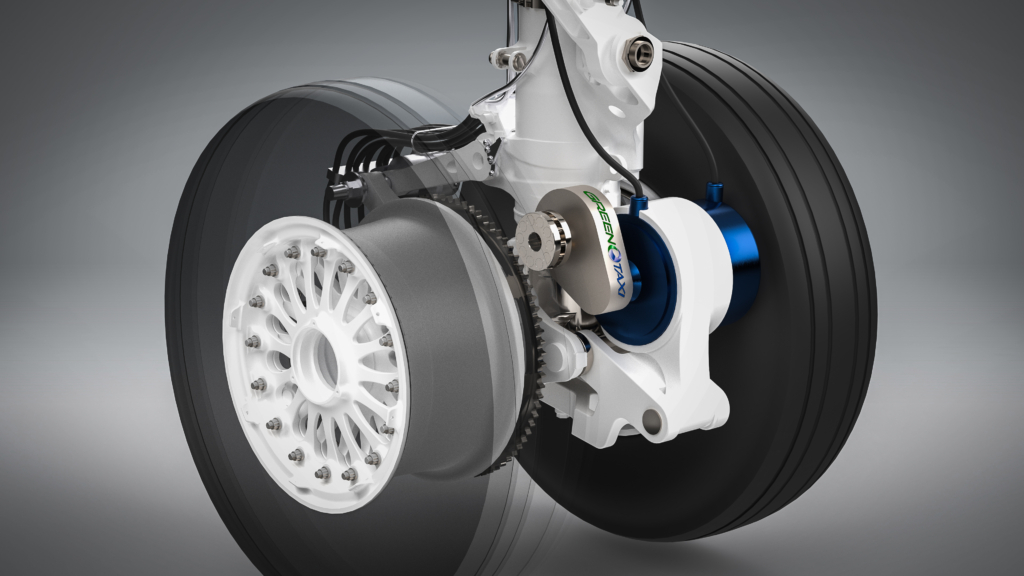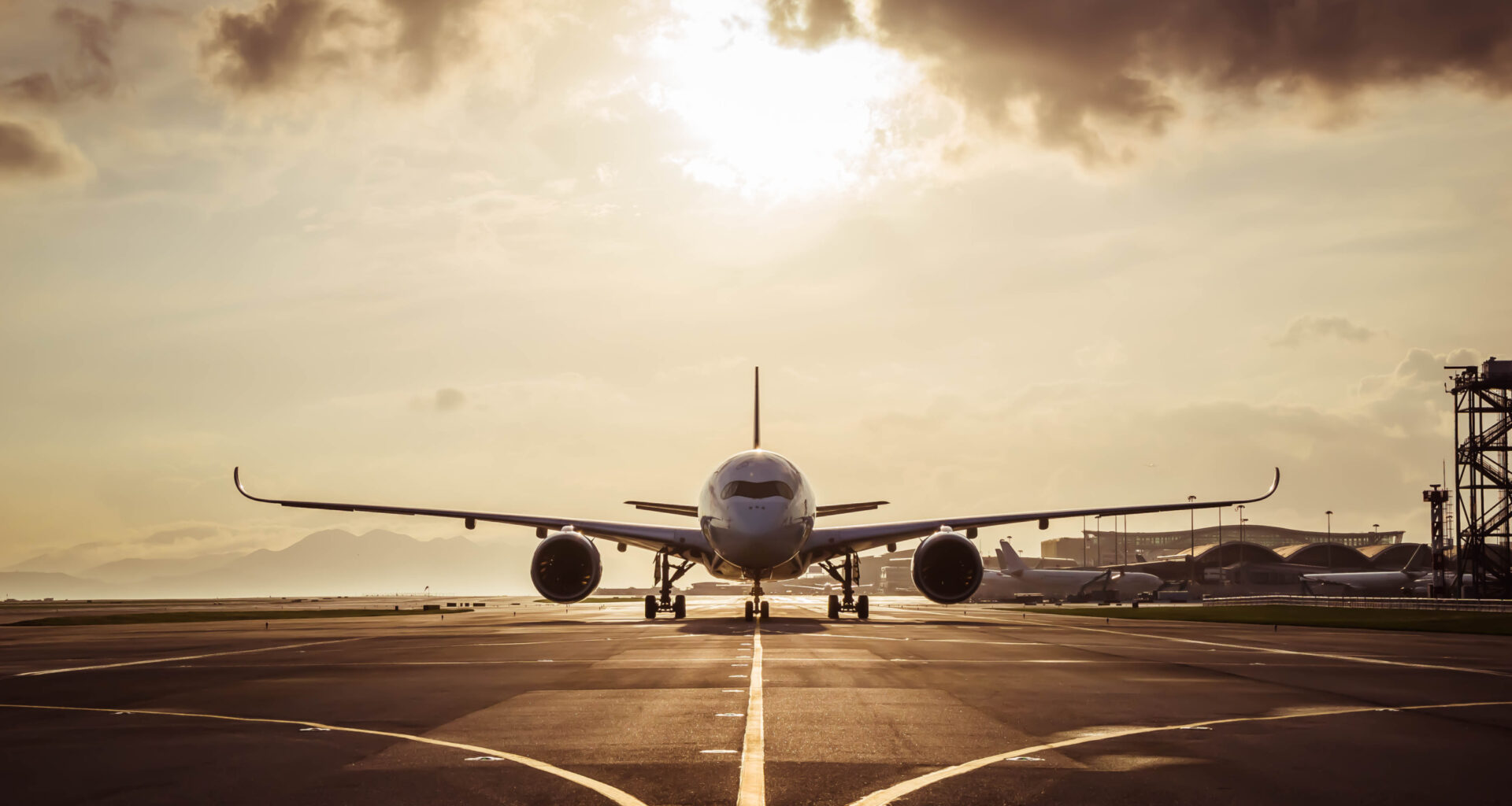Sign up for our newsletter and get our latest content in your inbox.
Airlines are burning vast quantities of fuel before they ever leave the ground. For an industry locked in arguments over sustainable aviation fuel (SAF), hydrogen and long-term aircraft programmes, electric taxiing might quietly be the fastest way to cut emissions this decade.
The hidden emissions problem: Why taxiing is aviation’s blind spot
Taxiing has long been treated as an operational footnote rather than a climate problem. Yet multiple studies suggest it is anything but marginal.
Speaking on the sidelines of the World Aviation Festival, David Valaer, CEO of Green Taxi, explained to AGN why this is such a problem.
“We did a detailed analysis with Cirium, which shows that 7% to 20% of the fuel for the whole flight is burned on the ground,” he said.
That tallies with broader research. An OAG analysis found that anywhere between 2% and 17% of total fuel burn can be consumed in taxi out and taxi in, with the highest shares on the shortest sectors.
 Photo: Henning Wiekhorst / stock.arobe.com
Photo: Henning Wiekhorst / stock.arobe.com
Consultancy Roland Berger goes further, estimating that around 10–15% of aviation’s CO₂ emissions are attributable to airport platforms, including taxiing, ground handling and auxiliary power.
And a 2022 academic study notes that taxi phases run at low thrust settings where combustion is comparatively inefficient, producing disproportionately high local emissions around airports.
Against that backdrop, Green Taxi’s focus on ground operations does not look like tinkering at the edges. It looks like a direct shot at a double-digit share of the sector’s emissions.
How electric taxiing works, and why it is suddenly viable
Green Taxi’s system avoids batteries altogether. Instead, it uses the aircraft’s existing auxiliary power unit (APU) to drive an electric motor on the main landing gear.
“We take the three-phase, 400 hertz power from the APU,” the CEO explains. “That comes forward to our motor controller, called an inverter. And then that provides the speed control for [an] axial flow permanent magnet motor that’s mounted on the main landing gear.”
The design uses a single main gear leg to save weight, and targets a certified maximum taxi speed of 25 knots, with a steady state of around 16 knots determined by APU power limits. Crucially, the main engines stay off throughout taxi, cutting both fuel burn and local noise.
Safran, L-3 and Honeywell demonstrated an electric aircraft taxi system on an A320 in 2012, proving the concept but never bringing it to market. The stumbling block was mass and packaging.
 Photo: Julian Herzog / Wikimedia
Photo: Julian Herzog / Wikimedia
“Safran’s system in 2012, their motor electronics were on a pallet. It weighed 500 pounds,” Valaer recalls.
The difference today is the maturity of high-performance electric drive tech, much of it inherited from motorsport.
“With all the billions of dollars in hybrid vehicle technology, our motor inverter is 30 pounds and is one foot by one foot,” David says. “Motor technology has rapidly advanced, and our technology is benefiting.”
The emissions and fuel-saving potential: What airlines could gain
The economics are what turned Delta from a curious observer into an active partner. Green Taxi has been working with the airline’s Sustainable Skies Lab to model the impact of its Zero Engine Taxi™ on a typical regional jet operation.
“Their average taxi out time is 18 minutes,” the CEO says. “You put all that together with the ground fuel flow, and you come up with about 100,000 gallons of fuel per year per aircraft.”
He does not soften the point: “That’s a hell of a lot.” In financial terms, “It’s equivalent to around $300,000 of fuel savings” per aircraft per year, he continues, “and it’s equivalent to around 250 cars of CO₂ for the whole year.”
He offers a provocative comparison: “If you electrify the whole airport, you would not save as much as one aircraft taxi for one year.”
In other words, focusing on aircraft ground emissions may move the needle far more than cleaning up ground support equipment alone.
There is, of course, a weight penalty. Green Taxi expects the system to come in at around 300 lbs. But the company has modelled this carefully.
“Carrying that extra mass is going to use about 8,000 gallons of fuel each year,” he explains. “That’s around 8% of the 100,000 gallons we’re going to be saving that aircraft.”
He argues that once airlines trust the system, they can simply offload that fuel. “We’re going to save them 400 pounds of fuel for burn,” he says, making the net weight effect close to zero once flight planning adapts.
Why electric taxiing could outpace SAF in the short term
The timing matters. SAF is central to every net-zero roadmap, but the volumes are not there yet. According to IATA and other recent analyses, SAF represented only around 0.3% of global jet fuel production in 2024, and even with rapid growth, is expected to reach just 0.7% of airline fuel consumption in 2025.
Individual airlines frequently report SAF costing two to three times more than conventional jet fuel.
By contrast, Green Taxi’s system bolts onto existing aircraft. “Our system will be a two-day installation time,” the CEO says, carried out during scheduled B or C checks lasting 8–20 days. “This is not invasive. This will not take them away from their operation.”
 Photo: Green Taxi
Photo: Green Taxi
Critically, it is non-flight-critical. “If, for some reason the system doesn’t work, you can still fly the aeroplane normally,” he says. In that case, crews revert to standard single-engine or two-engine taxi, with no hit to dispatch reliability.
That combination of retrofit speed, operational simplicity and high fuel savings is why he calls electric taxiing “the lowest hanging fruit that you can find for emissions and fuel reduction” over the next decade, while airlines wait for SAF, hydrogen and full-electric aircraft to scale.
Airline operations: what changes and what stays the same?
The cockpit changes are deliberately modest. Green Taxi has been working with Delta, SkyWest and others to ensure pilot flows are intuitive and that the system respects union and safety sensitivities.
Some ideas that crop up repeatedly in industry debates will not fly.
“Other people said, well, put reverse cameras on this,” he notes, to allow aircraft to back themselves off stands. “It’s never going to be embraced by the industry because the pilot union is not going to let the pilot back up an aeroplane and be responsible for crunching the tail. There’s always going to be wing-walkers.”
Likewise, the notion of pre-spinning wheels before landing to reduce tyre wear is a non-starter. “Everyone’s thought of that,” he says. “It’s a great theory.” But adding a motor that has to instantly spin up to touchdown speed introduces more problems than it solves.
Maintenance integration is also being designed to fit neatly into existing cycles. On one airline’s Embraer fleet, for example, tyres are replaced every 400 cycles. The company plans to swap the sprocket on the driven wheel at the same interval, treating it as a normal wear part.
The fleet-scale impact: How electric taxiing reshapes airline fuel and emissions
If the per-aircraft numbers hold, the aggregate impact is hard to ignore. A 100-strong regional fleet could theoretically save 10 million gallons of fuel per year. For a major carrier with several hundred suitable aircraft, the savings quickly reach into the tens or hundreds of millions of dollars annually, alongside a measurable cut in both global and local emissions.
Industry bodies estimate aviation accounts for roughly 2.5–3% of global energy-related CO₂ emissions today.
 Photo: Green Taxi
Photo: Green Taxi
Within that, airport ground operations are a small but fast-actionable slice. With SAF still representing less than 1% of fuel use worldwide, there is a growing recognition that “boring” efficiency measures will have to do more of the heavy lifting in the 2025–2035 window.
The path to certification: When electric aircraft taxiing could enter service
Technical promise is one thing, certification another.
“We touch the APU, we touch the landing gear, we touch the pilot control system,” the CEO says. “It’s a very complicated project,” involving around 10 designated engineering representatives across structures, electrical, software and flight operations.
Green Taxi plans to certify the system first for the Embraer E170/175 family, where high daily utilisation and short sectors produce strong economics. CRJs, 737s, A220s and A320-family aircraft are all on the long-term target list, with forward-fit options for OEMs also in play.
The company is currently finalising its certification plan with the FAA. The aim is to have a conforming prototype ready for tests in the second half of this decade, with a supplemental type certificate to follow.
If it all comes together, airlines may one day look back and wonder why it took so long to turn off the engines on the ground.
Sign up for our newsletter and get our latest content in your
inbox.

